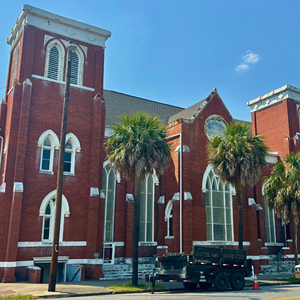|
A
|
Marshing toward disaster?
[
{
"name": "Air - MedRect Combo - Inline Content 1",
"component": "14680855",
"insertPoint": "7",
"requiredCountToDisplay": "5",
"parentWrapperClass": "fdn-ads-inline-content-block"
},{
"name": "Air - MedRect Combo - Inline Content 2",
"component": "14680856",
"insertPoint": "15",
"requiredCountToDisplay": "9",
"parentWrapperClass": "fdn-ads-inline-content-block"
},{
"name": "Air - SVP - Leaderboard - Inline Content - 2",
"component": "16852291",
"insertPoint": "10",
"requiredCountToDisplay": "10",
"parentWrapperClass": "fdn-ads-inline-content-block"
},{
"name": "Air - SVP - Leaderboard - Inline Content - 3",
"component": "16852292",
"insertPoint": "20",
"requiredCountToDisplay": "18",
"parentWrapperClass": "fdn-ads-inline-content-block"
},{
"name": "Air - SVP - Leaderboard - Inline Content - 1",
"component": "16852290",
"insertPoint": "25",
"requiredCountToDisplay": "22",
"parentWrapperClass": "fdn-ads-inline-content-block"
}
]
ccording to a recent study by Georgia Tech, the population of the Georgia coast is estimated to double by 2030.
Rapid and unplanned coastal development has become nothing short of a contagion. One need look no further than Florida to witness the consequences.
In a recent public hearing on the issue, Tampa Bay native Steve Willis, representing the Ogeechee Audubon Society, warned Georgians of the consequences of unregulated coastal and marshland development.
“The land they have is now useless,” he says of the Tampa Bay area. “It is stinking mud.”
For environmentalists, the question is not whether a developer can value his or her land as they see fit. The question is whether, through doing so, they can devalue what is not theirs alone but what belongs to us all.
For developers, the question is not whether there should be environmental regulations. For the most part their ultimate question is ‘what are the regulations?’ Without clearly-defined rules developers are hard pressed to finish a project located near the marshlands without ending up in court.
But what, if anything, exists to protect the marshlands and coastlines from overexploitation? Environmentalists in Georgia say it is the Coastal Marshlands Protection Act. Developers, along with some former state officials, say it is not.
The History
The year was 1969. Georgia’s governor was Lester Maddox, an old-school/old-South Democrat that history would remember as somewhat of an eccentric. He rode a bicycle backwards around the Capitol, denied black patrons entry to his fried chicken restaurant, and vehemently distrusted the federal government.
History would also remember him for signing into law the Coastal Marshlands Protection Act, O.C.G.A. § 12-5-286, and promptly tossing the pen over his shoulder to the floor. Though he begrudgingly proffered his pen in exchange for marshlands protection, it would represent perhaps Maddox’s most notable legacy.
Thirty years later the Coastal Marshlands Protection Act (CMPA) represents one of the strongest and most wearworn environmental regulations in the state of Georgia. Many people, including former state officials, would like to see it limited.
Among them is former DNR commissioner Joe Tanner (now representing coastal developers), former DNR Coastal Resources Division Director Duane Harris, and former Chair of the DNR Board, Ben Porter.
Also a noteworthy opponent is a former Assistant Attorney General assigned to the coastal division, Patricia Barmeyer, now a partner with Atlanta-based firm King & Spaulding, representing developers in several ensuing environmental cases.
Tanner and friends claim environmentalists are attaching legal parameters to the CMPA that do not exist. They point out that the CMPA was written to abate the dredging and looming threat of mining of the marshlands before and during the ‘60s. Developers argue that the CMPA does not extend so far as to require permitting for development upland of the marsh.
However in three instances Georgia Courts – including the Superior Courts of Fulton and Glynn Counties and a Georgia Administrative Law Judge – have interpreted the CMPA to require the state to consider the impact of an entire project on the state’s marshes, not just the portion on or over the marsh.
One ruling specifically required more factors be taken into consideration, including upland impacts of stormwater runoff, marsh buffers, and impervious surface coverage. You’ll want to remember these three annotations.
The Impetus
Developers have been at odds with the Coastal Marsh Protection Act for various reasons over the years. The true impetus, however, for the revisiting of the Act and its provisions is the Cumberland Harbour development near the Intracoastal Waterway in St. Marys, Georgia.
In March 2005 the Coastal Marshlands Protection Committee (CMPC) of DNR granted a CMPA permit for Cumberland Harbour to Atlanta developer Land Resources Companies, notably represented by aforementioned Barmeyer.
Cumberland Harbour, slated to be the largest marina development ever in coastal Georgia, is less than two miles from the coast of nationally protected Cumberland Island and is expected to introduce some 1,200 households and 800-plus boats to the shared waterway.
A side effect of such large-scale coastal development is nonpoint source pollution, carried by volumes of stormwater beyond what undeveloped land sheds. When rain falls on natural land the water is absorbed by the ground, but when it rains on roads, parking lots, and roofs the water rushes off, collecting pollutants such as oil, gasoline, rubber, fertilizer, etc. It then enters and contaminates the marsh, lowering water quality and affecting the nursery of countless marine life.
Environmental groups assert that DNR, as the permitting body, should have considered the impact on the marsh from uplands development when permitting Cumberland Harbour. Because they did not, the Southern Environmental Law Center (SELC), representing Center for a Sustainable Coast, Georgia River Network and Satilla Riverwatch Alliance, challenged the Cumberland Harbour permitting as a CMPA violation.
This case piggybacked two previous cases concerning developments at Emerald Pointe, near Savannah, and Man Head Marina, near St. Simons Island. All three challenges have thus far proven successful for environmental groups interested in the moderating of the projects.
Not only do these court decisions represent a victory for the environmental community but they also illustrate the need for clearly defined parameters of the CMPA.
Developers can only agree. The halting of Emerald Pointe and Manhead Marina developments, and delays in various aspects of the Cumberland Harbour development, does not sit well with investors. SELC and environmental groups recognize the courts as venue for CMPA interpretation.
Developers, however, have sought a solution by another route: the Department of Natural Resources.
Enter DNR: Things That Make You Go Hmmm...
Judge Michael Malihi ruled in favor of environmental litigants, deciding that DNR did not correctly apply CMPA regulations when permitting the Cumberland Harbour development. The case was appealed by DNR and the permit application is set to be heard by the Georgia Court of Appeals sometime next month.
Those findings could legally define the scope of the CMPA. Despite this pending appeal and despite the fact that DNR itself filed this appeal, the Georgia Department of Natural Resources initiated, and nears completion of, revision of CMPA rules.
SELC and other environmental groups have strongly encouraged the DNR Board to postpone consideration of new CMPA rules until after the court decision next month. After all, they argue, why would the state need to interpret laws that the court is in the midst of interpreting? Hmmm.
“Clearly we have three branches of government, one to pass laws, one to administer them, and one to interpret them: the legislative, executive, and judicial branches,” says Gordon Rogers of Satilla Riverkeeper.
“However, there is a substantial lobby that does not like where the courts are taking them, and they are seeking to have the executive branch (DNR) give them a new interpretation of the law. While this may be nominally legal, it is quite transparent what they are up to.”
Let us rewind to the Spring of 2006. An Uplands Stakeholder Group was convened by DNR and charged with clarifying some of the language of the CMPA. The Stakeholder group was specifically asked to develop recommendations on stormwater runoff, marsh buffers, and impervious surface coverage.
Remember these? Yes, it would seem that they were directly derived from rulings in the Cumberland Harbour case. Hmmm.
The Uplands Stakeholders were explicitly told by DNR attorneys that they were not expected to interpret the CMPA with regard to the scope or the “reach” of the Act. DNR made it clear they would decide what legal framework should be used to implement proposed measures. More importantly, DNR, and only DNR, would decide on the scope, or “reach,” of such recommendations.
During the second meeting the Stakeholder group, members agreed among themselves that a “supermajority” of well over half the members would be required to forward any solid recommendations, and that three or more members of the group could block such forwarding.
By the third meeting DNR made it clear they were moving directly toward mining a recommendation on the scope of the Act from the stakeholder group for use in rulemaking. Despite substantial protest by several Stakeholders, DNR proceeded. Hmmm.
By August 2006 DNR and Land Resources had petitioned the Court of Appeals to hear the Cumberland Harbour case. Several stakeholders voiced their strong objections to participating further in the stakeholder process due to this conflict of interest. Over their objections, the group voted on rule recommendations at the final Uplands Stakeholder meeting last December. Among the recommendations up for vote were various buffer widths, and various recommendations for impervious surface and stormwater runoff.
By the end of the voting, under the rules agreed upon by all members at the table, there was not sufficient consensus for most of the recommendations to be passed to the DNR Board. Yet the recommendations were presented to the full DNR Board in September to the dismay of many of the Uplands Stakeholders.
But the rules were presented with noticeable differences. One striking difference was the buffer recommendation was not for a 50-foot buffer on marinas, etc., as passed by simple majority, but was for a 25-foot buffer. It seemed as if DNR had arbitrarily chosen recommendations in disregard of the Stakeholders process.
So to clarify, recommendations now sat before the DNR Board that never definitively passed out of the Stakeholders group, were being considered “proposed rules” when they were never meant to become rules, and had been altered. Hmmm.
Admittedly, the central importance of the recommendations was not whether the buffer was set at 25, 50, or even 1000 feet. Because the buffer only applied to a marina and dock, and not to condos, roads, or other structures – the majority of the development – unless those structure were “related to” the “marshlands component of the project,” that is, the marina or dock.
So the resulting 25/50 dispute within the proposed rules ultimately acted as a red herring, masking the true impacts of the CMPA rule revision.
This still doesn’t change the fact that somewhere between the December Stakeholder voting and the September DNR Board meeting 25 feet fell off the buffer recommendation.
In short, the DNR Board was positioned to pass rules that could not only weaken the CMPA but also serve the interest of key developers who were tied up in court. If this 25-foot buffer had passed in January, defendants in the Cumberland Harbour case would then be able to present the modified CMPA rules to strengthen their case.
Counsel for Cumberland Harbour could point to the DNR Board’s interpretation of the CMPA as not applying to the upland portions (houses, condos, restaurants) of the development. Obviously, the Court can proceed however it sees fit and does not have to consider interpretations by bureaucrats, but if it is looking for guidance, it may consider the new rules.
To quantify the proposed buffer width – and here’s a bit of trivia for you – all of the top 10 men’s long jump record holders could jump over a 25-ft buffer. Not to mention that 25 feet would not even get a first down in football; you would be forced to punt.
But if you were building a development with thousands of condominiums and home sites and one large marina, it’s comparatively painless to put a 25-foot buffer on your marina. What you would not want is to have to have a 25 or 50-foot buffer on everything.
And according to the new proposed rules, you wouldn’t have to. That’s the key to the fight, and the key fight.
The Public Sounds Off
Savannah deserves a round of applause. More than 200 people came out to two public hearings in January and early February to voice their pleas to DNR. An overwhelming majority spoke at the January hearing in admonishment of the 25-foot buffer.
“I’d like to see it 75 if you could reconsider,” said Gail Mortland.
And then another curious thing happened. DNR changed the proposed rules back to the stakeholder-advised 50-foot buffer. Officials had originally defended the 25-foot buffer recommendation by claiming the Attorney General’s office said a 50-foot buffer under the CMPA would conflict with other environmental statutes.
Later, DNR Board members requested an official statement from the Attorney General regarding the 50-foot buffer. The statement, issued just before the Board was to vote on the 25-foot buffer, said a 50-foot buffer did not conflict with established regulations.
For the skeptics out there the science is not in question. Extensive research proves that an undeveloped 100-foot buffer maintained on land along marshes and waterways is the most effective buffer width to protect water quality from pollutants such as sediment, bacteria and nitrogen found in stormwater runoff.
According to a study by the Institute of Ecology at UGA, a 100-foot buffer of undeveloped land along the marshes appeared to be “sufficiently wide to trap sediments under most circumstances… An absolute minimum [buffer] width would be 30 ft.”
“In general a wider buffer is more protective of water quality,” offers DNR Coastal Resources Director Susan Shipman. “There is a stack of scientific information this high (she motions) that says so.”
However, a 100-foot buffer could disproportionately affect some property owners who do not necessarily have large tracts of land available to negotiate their home sites or developable area. Despite the fact that these rules would not apply to individual residential homes, the 50-foot buffer was recognized as a compromise.
The second public hearing in February allowed for public comment on the 50-foot buffer. Environmental groups steadfastly denounced the proposed rules, warning that they altogether weakened the CMPA. They questioned the enforceability of the proposed rules and pointed to vague language in that would doubtlessly become loopholes for developers.
Linda Bee of the Garden Club cautioned, “Current proposed rules contain many loopholes that stand to weaken the rules. Meanwhile the courts have ruled in three cases that the entire project be considered with respects to their impacts on the marsh.”
Several property owners emerged at the second meeting to voice frustration over the buffer widening. Though reassured that the proposed rules, and the 50-foot buffer, only applied to marinas, community docks, and fishing piers, they feared the slippery slope created by any “government takings.”
Emotions ran high.
“The taking of land borders on Communism,” said citizen Grant Dean. “It is the abolition of private property rights.”
Joe Fulcher countered, “Marsh buffers are restrictions on private property. But what I do on my property affects my neighbor’s property value. And marshes are property that belongs to everyone.”
But property owners weren’t the only ones confused about the proposed rules.
“Isn’t there a court case that is still under appeal?” asked Jane Frazier, “Why are we still going through this process? Is this a waste of taxpayer dollars?”
“I’m confused about why the DNR Board thinks that restricting the rules to marinas and community docks is such a good idea,” said Savannah developer Will Hanley, “Why not apply the rules to the entire subdivision, or the hammock for that matter?”
A representative of the Georgia Wildlife Federation said, “The world is littered with the remains of special places where people made poor decisions regarding development. If we squander our resources for the short-term financial gain of a few,” he warned, “we will regret our lack of vision. As a result of our short-sightedness, our coastal treasures are vulnerable to being undersold.”
DNR officials were present at both hearings to record public comments. The modified proposed rules are expected to be voted upon in the next DNR Board meeting Feb. 28. Environmentalists and developers alike expect them to pass.
The Future is Now
The response to the proposed CMPA changes has been tremendous. People across the country have focused on our coast and the consequences of these decisions.
State and local governments have reacted as well. The Glynn County Commission is reported as having drafted a resolution to urge DNR to table the rulemaking process to minimize confusion. Comments from Glynn County residents may be submitted to the “Glynn County Commissioners” by fax at 912-554-7596 or email at [email protected]/.
In the General Assembly, Rep. Brian Thomas (D-Lilburn) introduced legislation criticizing the rule changes and asking the DNR Board to reject rules that could weaken coastal marshlands protection.
The legislation, co-sponsored by lawmakers from around the state, contends the DNR rulemaking process was “prompted by a tiny group of developers and their lawyers and lobbyists at the expense of everyone else in this state, including generations to follow; and such a rule would be a gross abuse of the trust that the people of this state placed in our state government as stewards of this irreplaceable resource.”
On the House floor, Thomas reminded the DNR Board that their responsibility to the state was to “protect Georgia’s natural environment, not make it easier to destroy fragile ecosystems.”
Bi-partisan legislation was introduced last week that would enact a 50-foot buffer throughout the entire marsh that would apply not only to marina and community dock development but to condominiums and residential communities as well.
“American landscape is littered with how we got it wrong: the mouth of the Mississippi, the Everglades, and the Chesapeake all demonstrate how not to do it, and are nigh-on impossible to repair. Don’t let it happen in Georgia,” pleads Gordon Rogers.
“It’s critical that the Department and the Legislature work hard to get it right… as soon as possible.” ç
Summer Teal Simpson is a local freelance journalist. To comment, e-mail us at

























